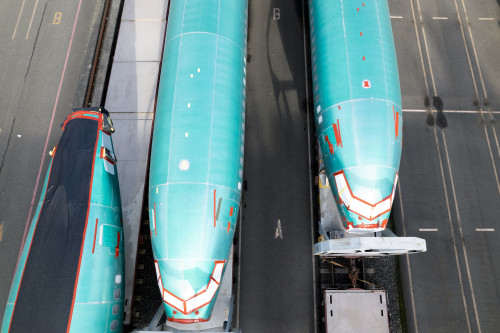
By Dan Catchpole
SEATTLE (Reuters) -Boeing expects to stabilize 737 MAX production at 38 airplanes a month over the next couple of months, its Commercial Airplanes Vice President of Quality Doug Ackerman told reporters on Tuesday.
The U.S. Federal Aviation Administration capped output at 38 airplanes a month after a mid-air panel blowout in a nearly new 737 in January 2024.
Prior to that, monthly production of its best-selling airplane had bounced between the teens and the thirties but Boeing struggled through a series of crises and controversies that have battered its finances, strained employee morale and shredded public trust.
After losing nearly $12 billion last year, the U.S. planemaker needs to increase 737 production to bring in more cash.
The company is on track to produce about 38 of the popular single-aisle airplanes this month, two sources familiar with the matter told Reuters. A Boeing spokesperson declined to comment on the production rate for May.
Boeing chief executive Kelly Ortberg previously said that the company needs to prove it can maintain production at that level for several months before it asks the FAA to lift the cap.
Once production is running smoothly, the company would also resume work on adding a fourth production line, Ackerman said.
Boeing is making steady progress on all six production quality and safety metrics created by the company and regulators, according to its annual Chief Aerospace Safety Officer Report, which was released on Wednesday.
Safety concerns submitted by employees to the company’s Speak Up reporting system rose by 220% from 2023 to 2024, according to the report.
Ongoing changes continue to make the program more effective, Chief Aerospace Safety Officer Don Ruhmann said during the media briefing on Tuesday.
For example, safety concerns are now evaluated by managers from other sections who are more likely to be impartial, rather than those who oversaw the work in question.
Boeing is also using machine learning to catch quality problems in its supply chain before they become widespread. While it is still “fine tuning” the approach, it is seeing statistical correlations between the data and the likelihood of supply chain issues, Ackerman said.
(Reporting by Dan Catchpole in Seattle and Allison Lampert in Montreal; Editing by Kirsten Donovan)



